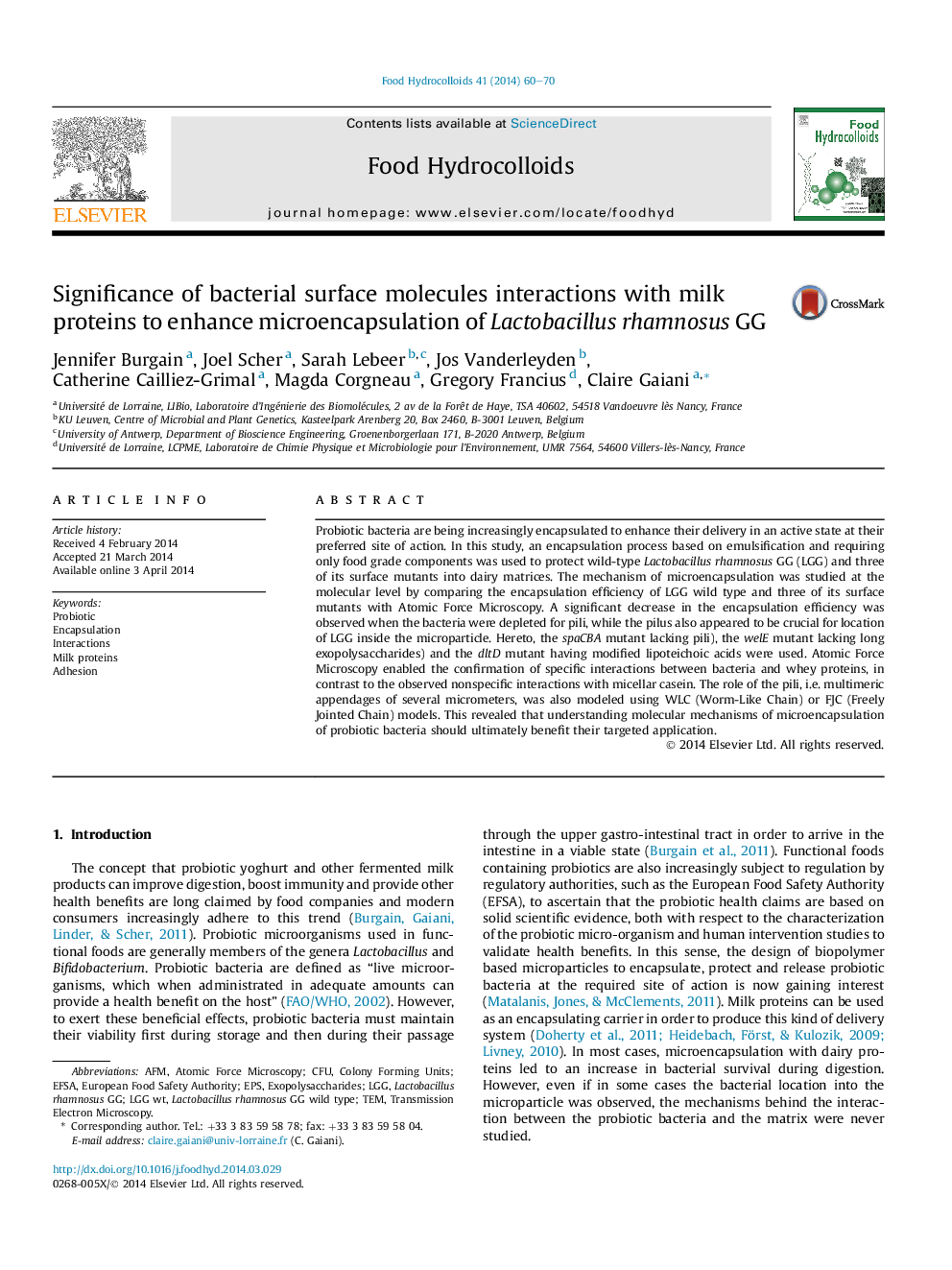| کد مقاله | کد نشریه | سال انتشار | مقاله انگلیسی | نسخه تمام متن |
|---|---|---|---|---|
| 605040 | 1454434 | 2014 | 11 صفحه PDF | دانلود رایگان |

• A probiotic strain Lactobacillus rhamnosus GG was encapsulated into dairy matrices.
• Interactions between milk proteins and LGG (wt and mutants) were studied by AFM.
• Links between encapsulation rate and bacterial surface molecules were highlighted.
• Bacterial surface molecules determining a successful encapsulation were identified.
Probiotic bacteria are being increasingly encapsulated to enhance their delivery in an active state at their preferred site of action. In this study, an encapsulation process based on emulsification and requiring only food grade components was used to protect wild-type Lactobacillus rhamnosus GG (LGG) and three of its surface mutants into dairy matrices. The mechanism of microencapsulation was studied at the molecular level by comparing the encapsulation efficiency of LGG wild type and three of its surface mutants with Atomic Force Microscopy. A significant decrease in the encapsulation efficiency was observed when the bacteria were depleted for pili, while the pilus also appeared to be crucial for location of LGG inside the microparticle. Hereto, the spaCBA mutant lacking pili), the welE mutant lacking long exopolysaccharides) and the dltD mutant having modified lipoteichoic acids were used. Atomic Force Microscopy enabled the confirmation of specific interactions between bacteria and whey proteins, in contrast to the observed nonspecific interactions with micellar casein. The role of the pili, i.e. multimeric appendages of several micrometers, was also modeled using WLC (Worm-Like Chain) or FJC (Freely Jointed Chain) models. This revealed that understanding molecular mechanisms of microencapsulation of probiotic bacteria should ultimately benefit their targeted application.
Figure optionsDownload as PowerPoint slide
Journal: Food Hydrocolloids - Volume 41, December 2014, Pages 60–70